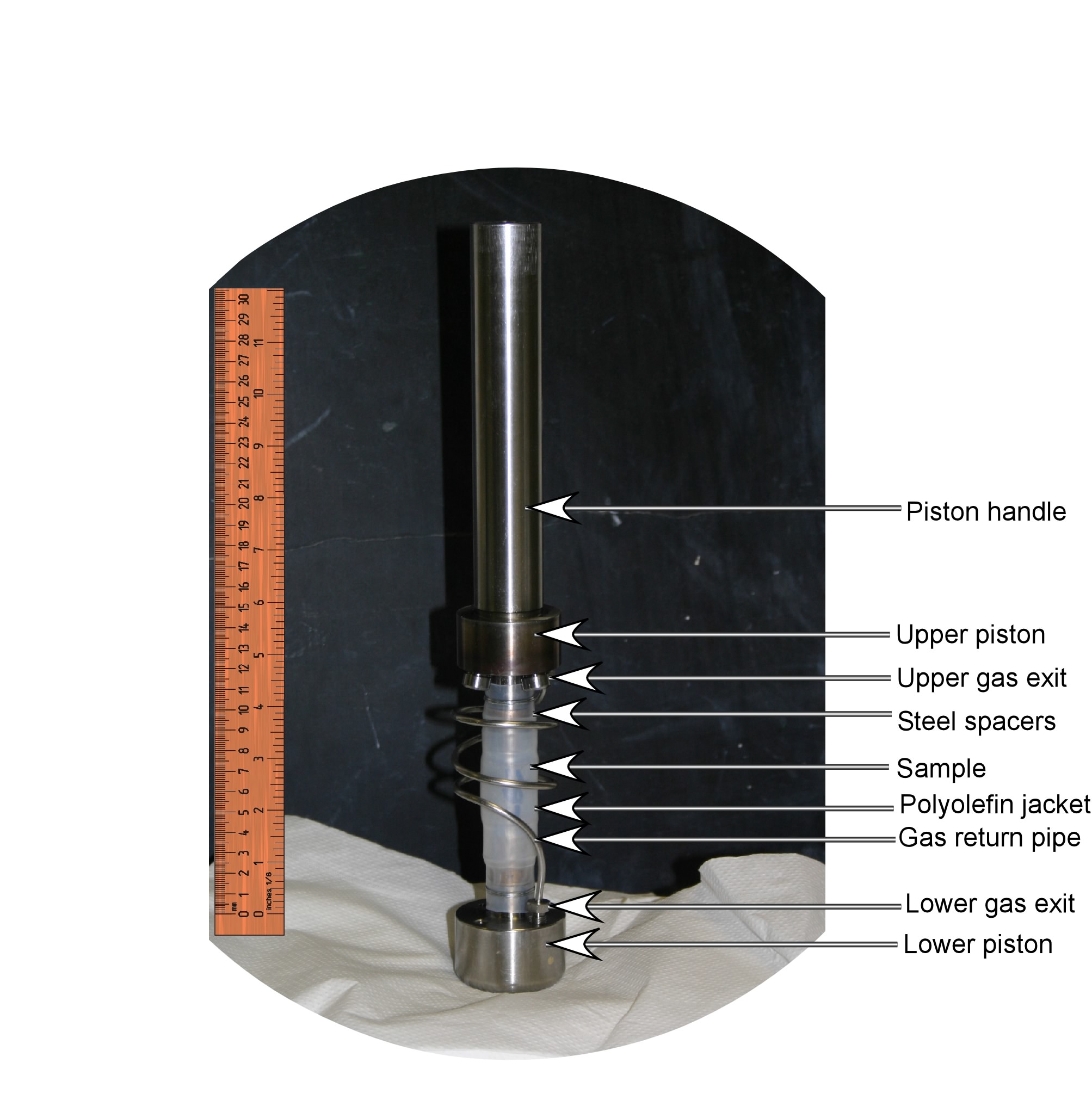
Weekly Petroleum Geoscience Digests
Permeability changes with changing depths – 04 September 2017
- By Dr Livinus Nosike
If rocks cannot allow fluid to pass, then we cannot extract the oil and gas in them while drilling. We will have to pump acid into the hole to dissolve the rock and create spaces, or we use water to push out this fluid by force. But how do we know if the rock will or not allow fluid to flow at the depth of petroleum reservoir? How do we compare between the permeability of muddy rock (shale) or sandy rock (sandstone)?
We cut out such rock on the surface by a process known as coring (see figures above). Then put the cut out sample in cellophane, waterproof, with a tube through which fluid can flow. We then put it into a compressible container known as pressure cylinder where we can pressurize the rock sample in stages, as they would be when buried at different depths. This way we simulate permeability variation with depth (increasing pressure and temperature while measuring the permeability).
We also reduce the pressure gradually to see what happens if a rock formerly buried is lifted up or exposed by erosion where it is less under pressure/load. At the end we are able to know how a similar oil and gas reservoir rock will behave.
From this, you see that permeability measurement requires a lot of skills and precautions. When measuring permeability, we use a filter to block either ends of the rock sample (see diagram above), so the grains do not scatter and block the measuring tube. We flush the valves with pressured air to ensure no particle is trapped in the tiny holes of the flow tubes.
Join me again for next week’s edition of petroleum geoscience digest or visit the news section of this website for previous editions of the digest.
For more info, contact Dr Livinus Nosike: contact@iesog.com


